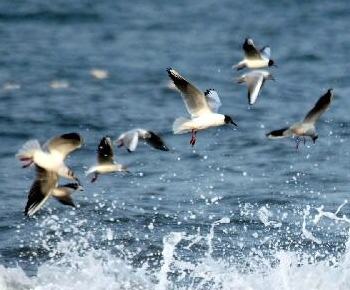China - Beidaihe and the Tibetan plateau

Tour Duration: 11 - 20 day(s)
Group Size: 1 - 12 people
Specialty Categories: Birdwatching Ecotourism
Season: September - October
Airfare Included: No
Sometimes a region is best explored by combining two destinations. In a nation as immense and diverse as China, this is accomplished by visiting both the famous migration site of Beidaihe in the east and the rugged Tibetan Plateau in the west.
Often known as the migration hub of the Orient, Beidaihe and Happy Island annually attract over three hundred species of Asian migrants, and our tour is planned to take full advantage of this amazing spectacle. We will search for Baikal Teal, Falcated Duck, Pied Harrier and a vast selection of Siberian birds including Siberian Rubythroat, the charming Rufous-tailed Robin and an impressive array of warblers and buntings. Five species of cranes and Oriental Stork are also possible. Bays and mudflats are a magnet for shorebirds and other specials including the endangered Saunders’ and Relict Gulls. We also make a pilgrimage to the famous Great Wall, snaking into the mountains, whilst searching for the incredible Red-billed Blue Magpie and Vinous-throated Parrotbill amongst many other species. Cultural activities during a day of exploring the highlights of Beijing include visiting the Forbidden City, Summer Palace and Buddhist Lama Temple.
We continue by flight to Qinghai Province, China’s most sparsely populated region. Here we set out into spruce and birch forests and mountain passes to seek the specials of the high Tibetan Plateau. These include the hardy Tibetan Sandgrouse, Tibetan Snowcock, Przevalski’s Partridge, Güldenst?dt’s Redstart, the multi-colored White-browed (Stoliczka’s) Tit-warbler and Tibetan (Roborovki’s) Rosefinch. The last mentioned is endemic to Qinghai and one of the world’s most sought-after birds. Bearded Vulture and Wallcreeper are more widespread, yet no less spectacular birds we hope to encounter.
Later, on the shores of Koko Nor, we expect the stately Black-necked Crane, one of Tibet’s endemic breeding species, and a smorgasbord of waterfowl and waders. Ascending past the blue waters of this fabled lake we will search for mountain specials including the aberrant Groundpecker, Przevalski’s Redstart and Long-tailed Rosefinch. The latter is now a major target for bird family listers as it is sometimes promoted to its own monotypic family Urocynchramidae. We conclude by visiting the semi-desert of Chaka where we will search for the enigmatic Henderson’s Ground Jay, Pallas’s Sandgrouse and Blanford’s Snowfinch. We should see a good selection of mammals including Tibetan Gazelle, Tibetan Wild Ass (Kiang), Blue Sheep, Wolf and possibly even the mythical Snow Leopard! This will be an unforgettable tour to a seldom-visited yet spectacular region of the world.
Our very special Giant Panda and Crested Ibis Extension takes us to the Qinling Mountains where the highest density of Giant Pandas survive. We will venture out daily with specialist panda trackers and we stand an excellent chance of encountering these fabulous symbols of the world’s endangered wildlife. Until very recently, seeing Giant Pandas in the wild was just a fantasy for wildlife enthusiasts but now it is really possible! Other exciting mammals that may be seen are the strange Takin and rare Chinese Snub-nosed Monkey. We will also visit a nesting colony of the critically endangered Crested Ibis and other birding possibilities include Golden Pheasant, Ibisbill and an array of exciting East Asian forest species. An exploration of the Terracotta Warriors and Horses Museum also forms part of this fabulous tour.
 0
0 






